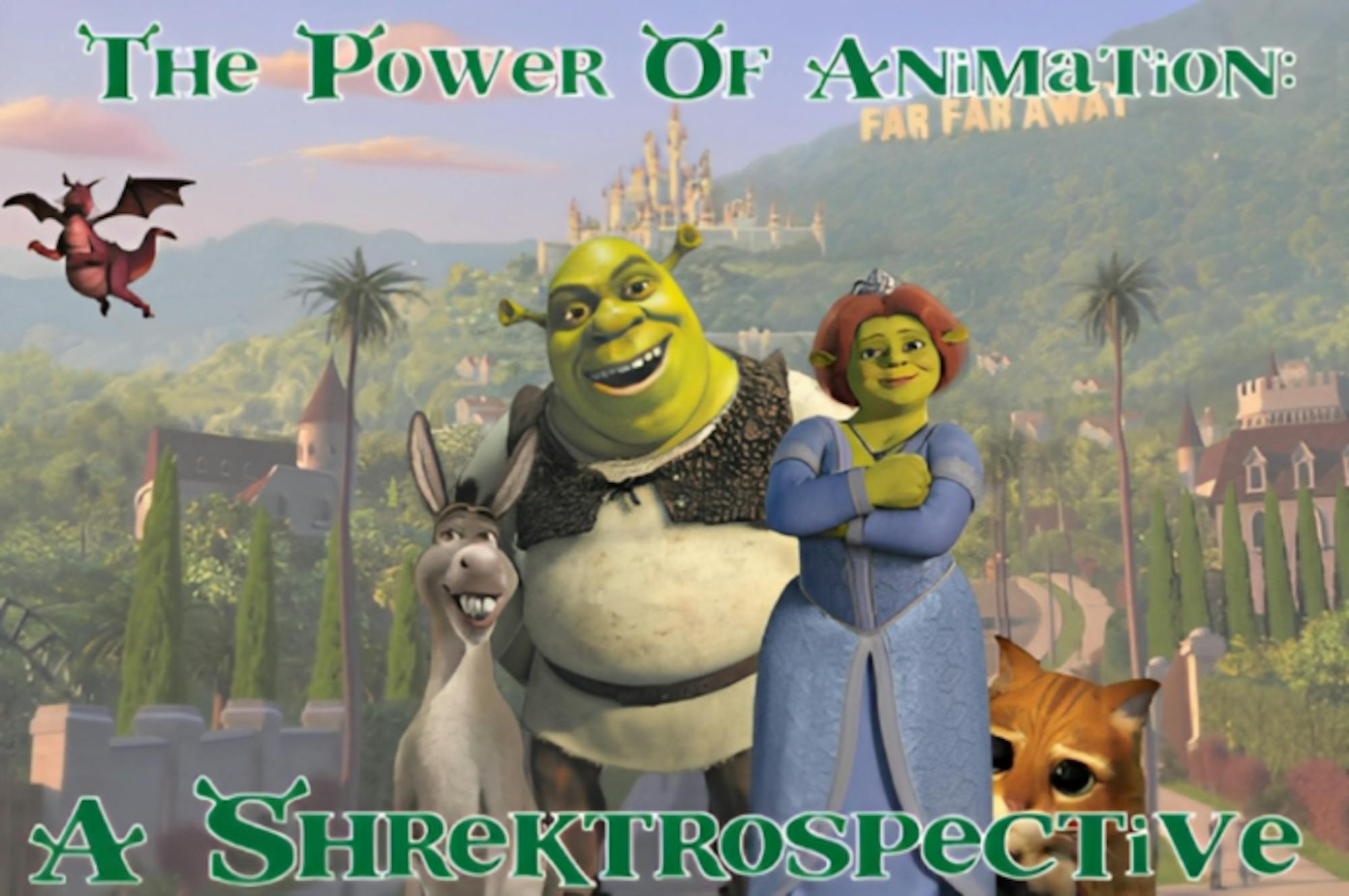
As a student at Notre Dame, it’s hard to deny my love for the “Shrek” franchise. The film boasts of alleged connections with the University that have been denied by various sources but still remain present in campus culture. If it were any other film, the perpetuation of such mysteries and affections would not be the same. Then again, “Shrek” is just that iconic.
Based on a book of the same name by William Steig, the rights to the story were sold to DreamWorks for $500,000. Many things led it to develop a nasty reputation amongst its animators, including its low budget of $60 million and the laborious process of animating everything using computer generated images. This technology and the techniques featured in the movie were unlike anything that had been done before, so the animators had to start from scratch.
Director Vicky Jenson said that “Getting sent to [work on] ‘Shrek’ felt like being sent to Siberia.”
This past Saturday, the film celebrated its 22nd birthday. When it was first released, DreamWorks did not anticipate the popularity of the film among children and adults alike — a phenomenon unfamiliar to animators at the time. Before “Shrek,” animated films were just for kids. The green ogre’s comedic and vulgar speech elevated the film and changed mainstream perception of what animation could look like and who it could be for.
Since the first movie — which grossed nearly $500 million worldwide — the franchise has grown and shifted dramatically along with the animation industry. Three additions to the “Shrek” franchise have been released (and another is in the works), as well as two spinoffs about Puss in Boots, various short films and a few TV specials.
Shrek revolutionized what animation could be, but this sentiment no longer seems to exist.
Netflix has canceled several of its animated series after one season, even scrapping some that had yet to make it to the platform. Cartoon Network’s merge with Warner Bros. Discovery has caused some major layoffs. Every 2D Disney classic is now being made into a live-action movie, devaluing and taking the spotlight from their original versions. It seems that the whimsy and excitement embedded within the art of animation is starting to lose favor within the mainstream.
The popularity of animated features rises and falls throughout the years, but the declines never fail to scare the artists and enthusiasts. Despite the impact of “Shrek,” animation is still considered just for kids.
However, there is hope. “Puss in Boots: The Last Wish,” one of the “Shrek” franchise spinoffs, has done well in box offices worldwide. With a stunning cast, adventurous music and an altered animation style to make the film seem more like a storybook narrative, the film has continued to create buzz months after its release.
Even though the movie expands on a fairy-tale classic, it tackles real issues that people of all ages experience. Puss deals with the concept of mortality and a failed relationship, Goldi struggles with feelings of belonging in her found family and all the characters tackle the terrors of Jack Horner’s industrial plans. The moments of emotional vulnerability shine through and bring the audience to tears.
This is just one example of animation’s ability to “wow” an audience. There’s something about this medium that transcends realistic expectations all while bringing the issues of life to the forefront. It’s a difficult art to master, and those who pursue it are hardly appreciated enough for their hard work and dedication.
The anniversary of “Shrek” reminds us of its wonder but also of its power to transform a whole artistic medium. As Guillermo del Toro said in his speech at the 2023 Oscars, “Animation is cinema. Animation is not a genre, and animation is ready to be taken to the next step … Keep animation in the conversation.”
Read More
Trending









